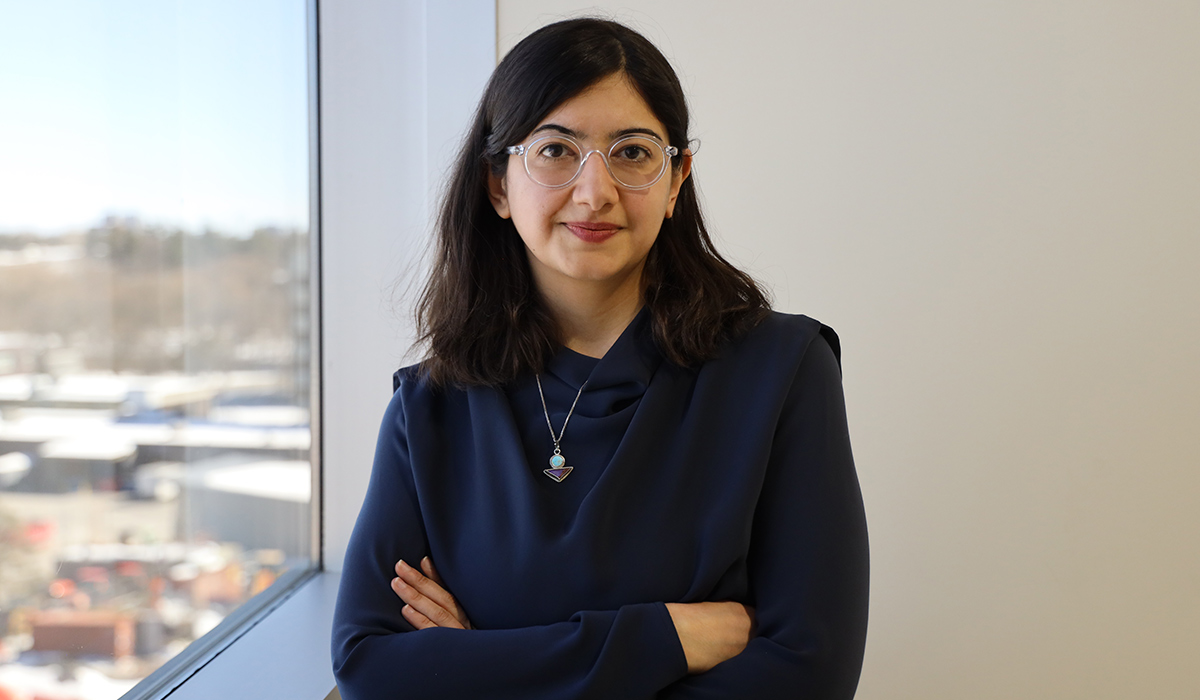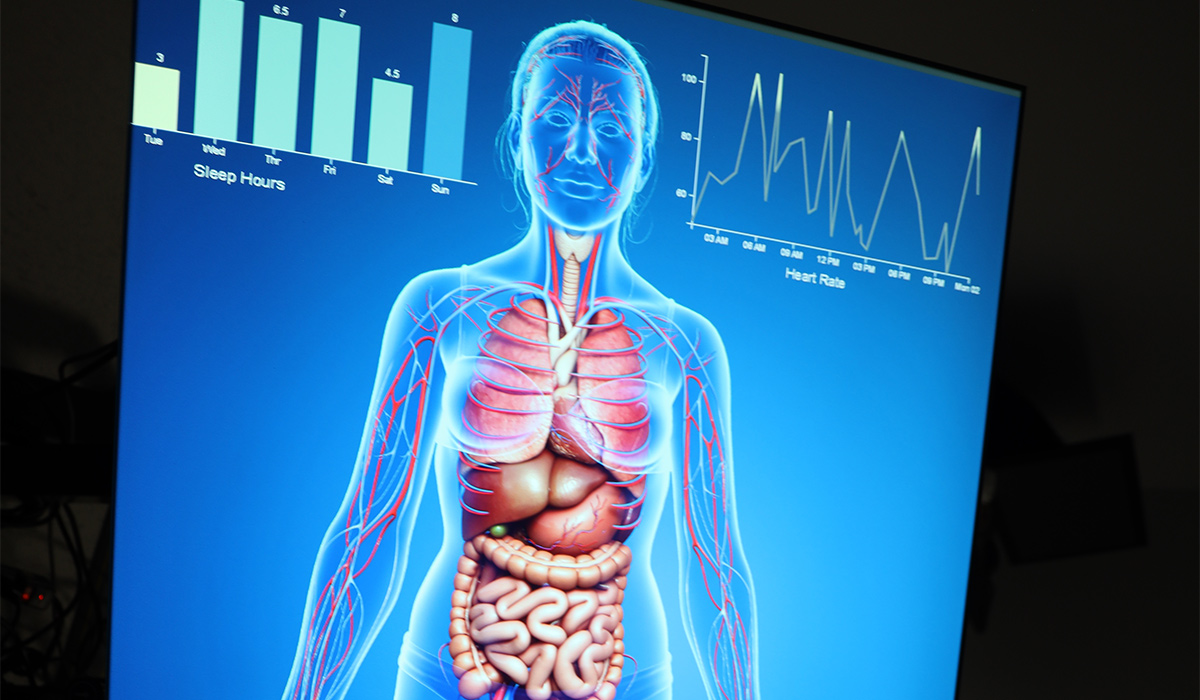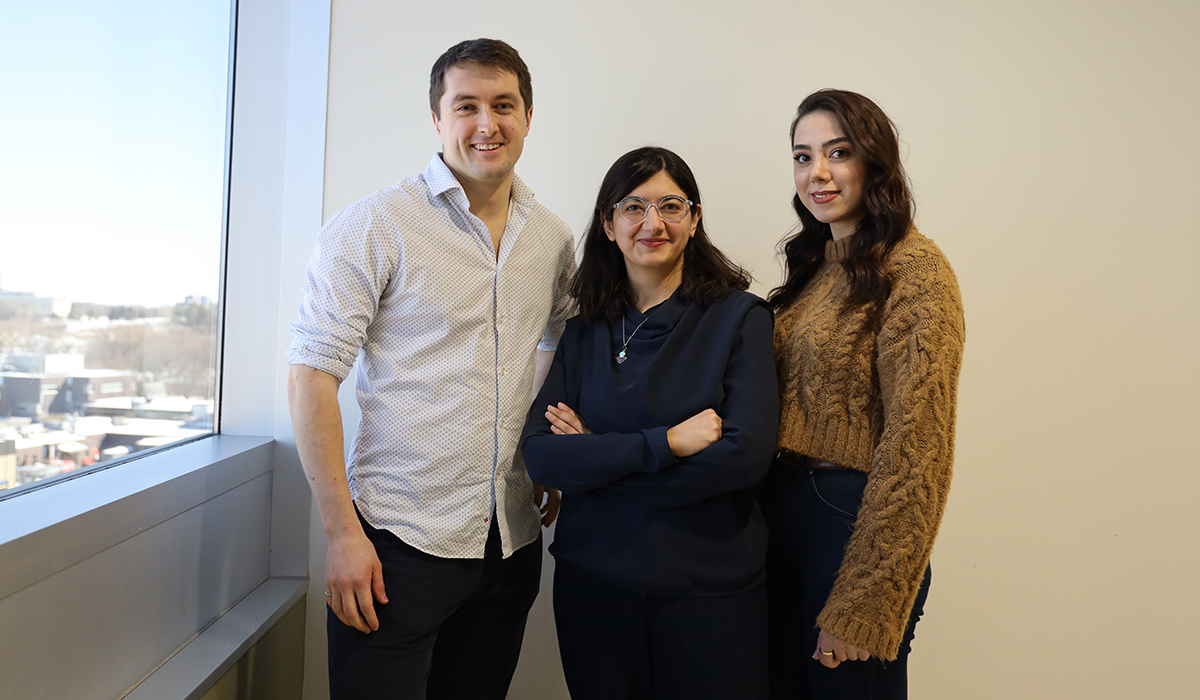By Dan Rubinstein
Interactive technology makes it easier to share and discuss health data
The human body is an incredibly complex machine. When it stops working properly, the doctors trained to fix it often need to discuss a lot of detailed information with their patients — a vital but typically rushed exchange in Canada’s overburdened health-care system.
But what if, instead of sitting behind a desk, looking at a monitor and telling people about their ailments and potential remedies, health-care providers could share health data in an interactive, visual way?
And what if, rather than remaining passive recipients of these reports, patients could provide more data when appropriate and/or play a more active role in the healing process?
To help people become better engaged in their own medical care, Carleton University systems and computer engineering researcher Fateme Rajabiyazdi and her students are developing health information visualization software for large, multi-touch displays.

These displays, which can be positioned upright like a television, or, at the touch of a button, slide flat like a table, look like something one might see on a TV show. Yet this technology is no entertainment industry fabrication; it’s a hardware and software innovation with the potential to improve communication between patients and health-care professionals and foster more collaborative, data-driven decisions.
“We’re moving toward an era of patient-centred care,” says Rajabiyazdi, whose HealthVisFutures Lab is home to a 55-inch, optical, multi-touch, high-resolution display. “The old paternalistic approach — physicians telling people what to do — has changed, but the technology hasn’t caught up yet.”
Her displays have fast, accurate, reliable, robust and unlimited touch functionality that can accommodate interaction by multiple users and different mediums, such as being touched by gloved or ungloved fingers as well as pens, allowing many people to work simultaneously.
“Physicians want patients to be more involved in their own care and patients want this too,” says Rajabiyazdi. “But it doesn’t work well if you have two people trying to look at large collections of data together on a phone. We want to use interactive displays to bring patient data to clinicians’ attention and clinical data into patients’ hands in a more accessible way.”
Making a Visit to the Doctor’s Office Count
Rajabiyazdi, who began her university studies in software engineering and computer science before doing a PhD specializing in information visualization, has long been interested in creating applications to help people manage and improve their health.
“We can make new apps and platforms but it’s challenging to integrate them,” she says, “because physicians are busy and patients can be in a vulnerable situation.”

In an average visit to a doctor’s office, there can be just a few minutes to convey a lot of complicated information. Patients might not remember or retain what they’re told about their illness or condition and the things they need to do to get better.
“But if information is shared in a visual way, it can give you a stronger memory,” says Rajabiyazdi.
“And if you’re more engaged in the conversation, that can also help you remember things and support your involvement in the decision-making.”
Health Data: The Rise of Self-Monitoring Devices
With the rise of self-monitoring devices, which keep track of health indicators like blood pressure and glucose levels, as well Fitbits and other gadgets that record things such as heart rate and calories burned, people increasingly have an array of data that could inform their diagnoses and treatment plans. But it needs to be meshed with the test results and other measures that doctors rely on.
“Patients with chronic diseases like diabetes have complex health conditions that can be difficult to treat,” says Rajabiyazdi.
“How do you show a patient what diet is best for them? It’s not a one-size-fits-all solution. It has to be tailored to their age and their lifestyle. We’re hoping to help physicians come up with more individualized plans.”

Rajabiyazdi is now consulting with doctors, physiotherapists and speech language therapists to learn about how the technology could best support their work
One area in which it could prove beneficial is hybrid remote care — for instance, patients in small or remote communities, who could go to a hospital or clinic and communicate with a specialist hundreds of miles away via one of these displays, a camera and a microphone.
“We see this technology as a communication medium,” says Rajabiyazdi, “and a step toward improved health outcomes.”